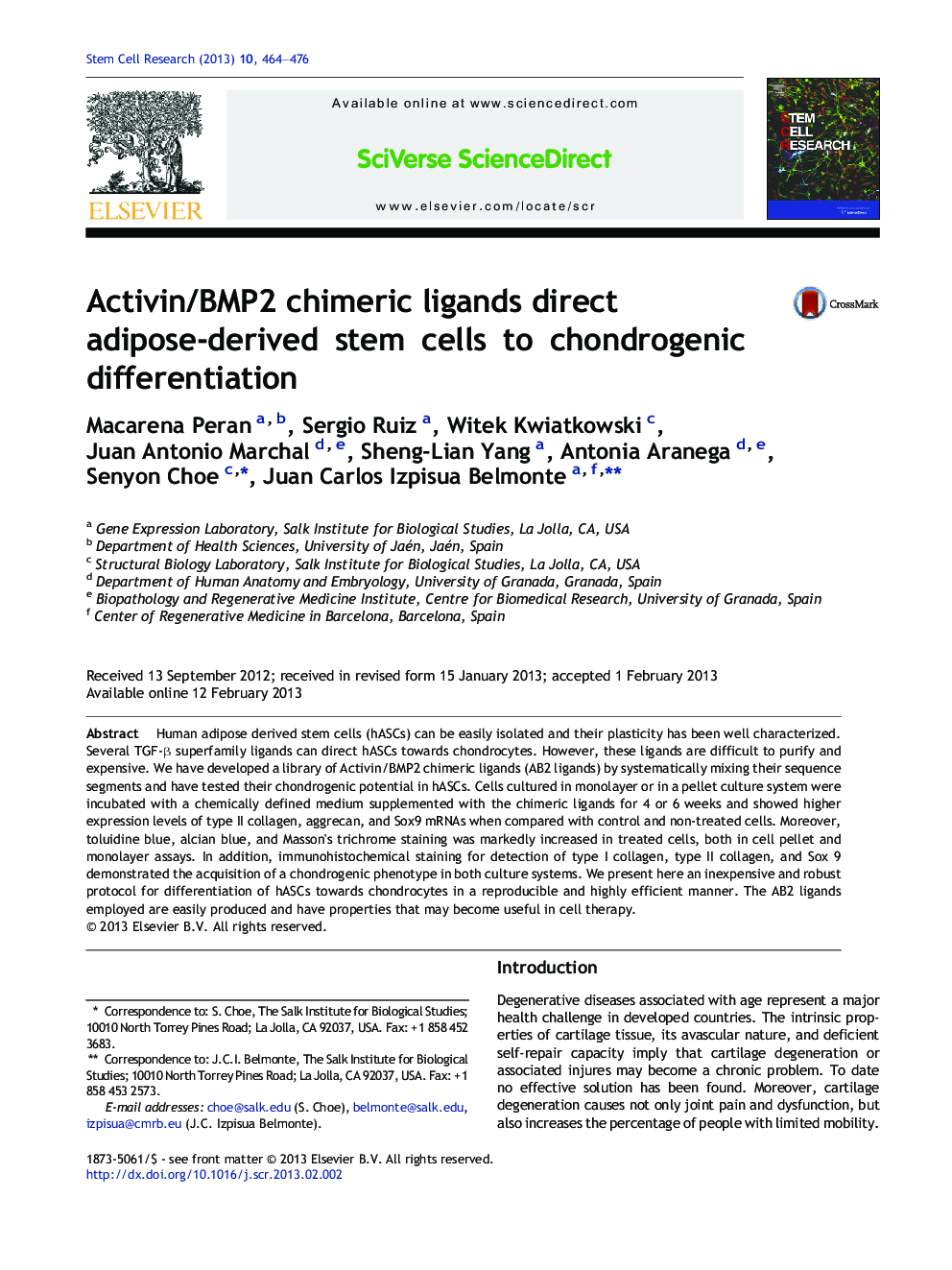| Article ID | Journal | Published Year | Pages | File Type |
|---|---|---|---|---|
| 2094211 | Stem Cell Research | 2013 | 13 Pages |
Human adipose derived stem cells (hASCs) can be easily isolated and their plasticity has been well characterized. Several TGF-β superfamily ligands can direct hASCs towards chondrocytes. However, these ligands are difficult to purify and expensive. We have developed a library of Activin/BMP2 chimeric ligands (AB2 ligands) by systematically mixing their sequence segments and have tested their chondrogenic potential in hASCs. Cells cultured in monolayer or in a pellet culture system were incubated with a chemically defined medium supplemented with the chimeric ligands for 4 or 6 weeks and showed higher expression levels of type II collagen, aggrecan, and Sox9 mRNAs when compared with control and non-treated cells. Moreover, toluidine blue, alcian blue, and Masson's trichrome staining was markedly increased in treated cells, both in cell pellet and monolayer assays. In addition, immunohistochemical staining for detection of type I collagen, type II collagen, and Sox 9 demonstrated the acquisition of a chondrogenic phenotype in both culture systems. We present here an inexpensive and robust protocol for differentiation of hASCs towards chondrocytes in a reproducible and highly efficient manner. The AB2 ligands employed are easily produced and have properties that may become useful in cell therapy.
Graphical abstractFigure optionsDownload full-size imageDownload high-quality image (244 K)Download as PowerPoint slideHighlights► A library of Activin/BMP2 chimeric ligands was tested for chondrogenic potential. ► Chodrogenic phenotype in mololayer and pellet culture systems was acquired. ► An inexpensive and robust protocol for differentiation of hASCs towards chondrocytes. ► The scalable number of chondrocytes obtained may be relevant for cell therapies.
